As the medical research in the elderly sharply It increases the risk of osteoporosisIn which bone density decreases and they become brittle. This is one of the main factors increasing the number of fractures, including hip injury is one of the most serious injuries.
About a quarter of the victims die within the next 6 months. Forced prolonged immobilization may lead to an aggravation of other somatic diseases and also to mental disorders.
The content of the article:
- 1 What is the femoral neck, and where?
- 2 Statistics fractures in the elderly
-
3 Types of hip fractures
- 3.1 Supkapitalny fracture
- 3.2 Transtrochanteric displaced fracture
- 3.3 impacted fracture
- 3.4 Open fracture
- 3.5 closed fracture
- 4 Symptoms of hip fracture
- 5 First aid for fractures
- 6 Relieving the condition of the victim
- 7 Diagnostics
-
8 trauma in the elderly Treatment
-
8.1 conservative therapy
- 8.1.1 analgesics
- 8.1.2 diuretics
- 8.1.3 Medications for restoration of bone and cartilage
-
8.2 Surgery
- 8.2.1 Preparation for surgery
- 8.2.2 What is the surgery?
-
8.1 conservative therapy
-
9 Rehabilitation in the elderly
- 9.1 early period
- 9.2 Late and remote periods
- 9.3 Care at home
- 10 Psychotherapy
- 11 Complications and prognosis
- 12 Video of hip fracture
What is the femoral neck, and where?
Femoral neck fracture in the elderly is very dangerous, is located in the hip joint. It is the largest articulation in the skeletal system. This joint plays an important role in maintaining body stability during travel and femur - the large tubular bone in a human. It also serves as a link between the legs and torso.
In its upper part is rounded articular head, the main constituent elements are the head, large and small trochanter. Spherical surface allows for rotational movement.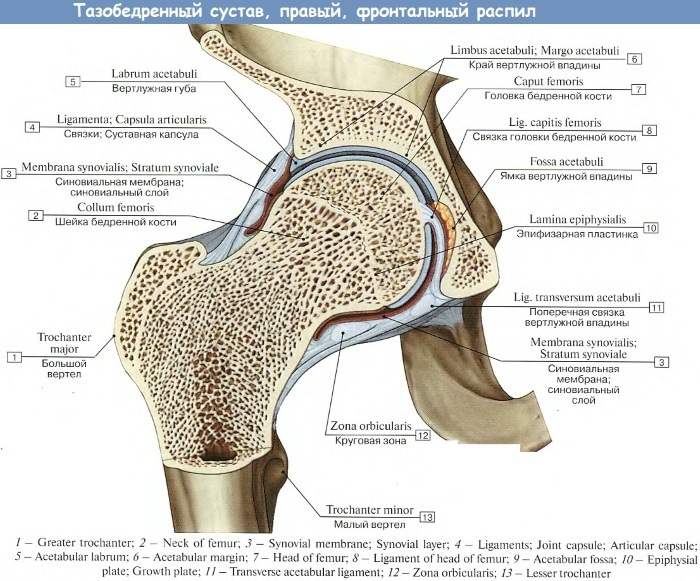
The neck of the femur located between the spit and the head, i.e. directly into the joint cavity. Ligaments that attach to the head of the thigh, to limit excessive rotation of the limb.
Statistics fractures in the elderly
The main cause of hip fractures in the elderly - osteoporosis - is on the 4th place in prevalence of non-communicable diseases after cardiovascular pathologies, oncology and diabetes. In 1990 registered more than 1 million in the world. cases such trauma, but by 2050 it is expected that this figure will reach 4.5 million.
According to statistics, Russia 1 occurs hip fracture every 5 minutes, and 30% of the population are at increased risk for the preparation of the damage. Almost one in three women and one in five men over age 50 have osteoporosis in varying degrees.
Types of hip fractures
hip fractures are classified as follows:
- the nature of damage to the surrounding soft tissue - indoor and outdoor;
- by the mechanism of injury - the line (stroke or drop) and indirect (with a sharp rotation on a fixed foot);
- post injury - in the neck, the head, the greater trochanter; medial fractures - on a plane lying above the attachment to the hip joint capsule (intraarticular), spit - fracture below this plane (or lateral articular);
- the displacement of the bones - offset and without it. With the full deployment is a violation of the blood supply and the risk of developing head necrosis.
Supkapitalny fracture
Subcapital fracture plane located in close proximity to the femoral head. In such cases, the prognosis is often very unfavorable in terms of bone fusion, as this greatly disturbed blood flow and necrosis may begin.
It is best to fuse fractures, a plane which passes near the head of the femur. If the injury occurred at the neck base or directly through it in the middle part, the chances of a successful outcome is reduced.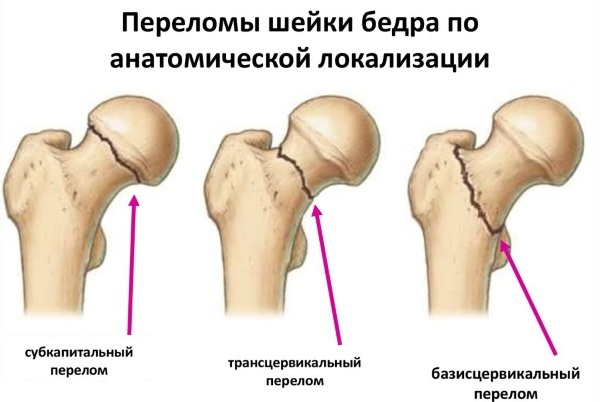
Another important prognostic factor is the angle of inclination of the fracture line. The closer it is to 90 ° (to a vertical plane), the higher the likelihood of significant displacement of bones and their bad splice.
Such fractures often occur in elderly patients when falling on the injured leg. Their treatment is done surgically by osteosynthesis or prosthesis.
Transtrochanteric displaced fracture
Fractures in the trochanteric region are extra-articular, therefore at risk of such damage is reduced necrosis of the femoral head. Generally accepted treatment for this is considered surgical.
In the general structure pertrochanteric fractures account for about 1/3 of damage cases. There are several varieties of them: simple, comminuted, subtrochanteric (below the trochanter) intertrochanteric (between large and small trochanter) chrezpodvertelnye (when a fracture passes through spit and below them).
impacted fracture
Impacted fracture (compression) - it is the case of injury, wherein one of the bone fragments is introduced into the other. This type of damage in most cases characterized by good prognosis. Most of these fractures occur in middle-aged adults in the fall on the side assigned to the leg.
Patients may thus continue to walk, feeling the pain in the hip or knee. Treatment is directed primarily at preventing divergence of bone fragments. Is applied to the feet of a tire with traction by means of a mass of 3.2 kg.
2-3 months is allowed to move with crutches, without relying on the injured leg. Increased pressure on the limb is possible in 5-6 months.
Open fracture
Open fracture of the femoral neck is one of the most dangerous, since in this case the following processes:
- Violation of the blood supply to the bone.
- Increased risk of an open wound infection, nonunion bone.
- Violation of limb function.
- Increasing the recovery period of the patient.
- pseudoarthrosis formation (pseudarthrosis) in place uncharacteristic because of the long bone fusion (typical for 40% of patients).
Femoral neck fracture in the elderly which openly - this is a very serious condition, 82% injured patients as a part of multiple skeletal damage, such as from a car accident.
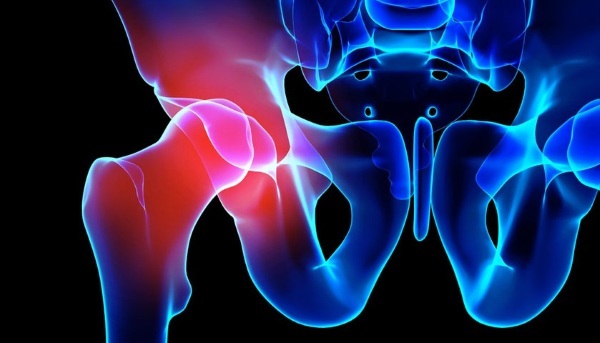
It is also possible the development of secondary open fractures where the soft tissue and skin rupture occurs as a result of exposure sharp ends of bones and bone fragments with a closed fracture or necrosis arising due to impaired blood circulation and infection.
closed fracture
In a closed fracture integrity of the skin and muscles remain intact. only minor cuts and abrasions can be observed. Older people often fixed exactly this kind of hip fracture in the fall.
In this case, there is no loss of blood, as in the previous case, since there is no open wound. The principle of first aid is the same, except for applying the patch.
However, it does not mean that the patient has no internal bleeding. Therefore, the patient is also recommended to apply ice leg to reduce pain and swelling of tissues.
Symptoms of hip fracture
Signs of a hip fracture are the following:
- pain in the groin, which is weakened at rest and increases with movement, and when tapped on the heel of the affected leg;

- relative shortening broken limbs due to bone displacement of 2-4 cm, and reduce the gluteal muscles, tighten the leg to the pelvis;
- swelling at the site of injury, hematoma or hemorrhage open;
- external rotation - visually stop the damaged leg is more expanded outwards than healthy Of course, this person can not independently normalize its position and pull the heel of bed;
- occurs when you try to turn the crunch in the joint, lift his leg the patient can not (except for compression fracture), but flexion and extension possible.
First aid for fractures
In any case, whether it is open or closed fracture, the patient must provide rest and call a doctor. Not recommended to transfer the patient to another location before the arrival of ambulance crews, as this will cause even greater injury.
Femoral neck, which fracture can cause serious complications, it may be partially damaged due to compressive loads. Compression fracture in the elderly is dangerous because when the alleged relative prosperity occur following complications:
- the formation of an open fracture of the closure;
- internal offset a broken bone pieces;
- tissue damage and blood vessels bone fragments, internal bleeding.
When providing first aid must be guided by the following rules:
- open fractures in the first place you need to stop the bleeding - apply a pressure bandage or a tourniquet above the injury, squeeze the blood vessel;
- contaminated an open wound as far as possible to clean sterile cloth;
- protruding bone fragments in any case it is impossible to reduce a self;
- to limb was fixed during transport and internal tissues do not receive more damage, the leg is fixed to the bus (you can fix it to healthy leg via bandage pads and between the limbs in the form of a board with a soft material, e.g., gauze or cloth, folded in several layers);
- near the damage can be applied cold (bottle with cold water or ice) to stop the internal or external bleeding and reduce swelling.
Relieving the condition of the victim
In severe cases, the victim may lose consciousness from traumatic shock. When the first precursors can give him a sniff of ammonia, but this should be done with caution, as the substance can lead to spasm and respiratory arrest.
If the patient is experiencing unbearable pain, you need to take painkillers. The man in this case must be in the mind, otherwise it may suffocate in contact with the drug in the airways.
Diagnostics
Diagnosis is based on anamnesis data (actual fall or other type of injury), the external features described above, and radiographing injured limb in 2 projections. In some cases, your doctor may prescribe a CT scan to clarify the clinical picture. Other lab tests are not informative.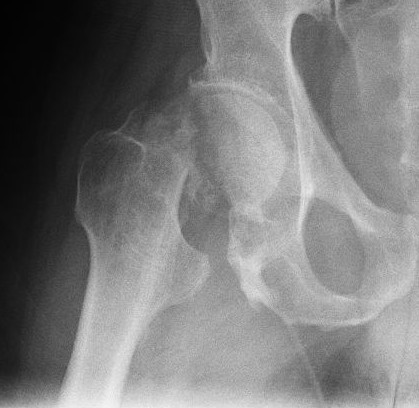
If the patient has multiple injuries, the appointed consulting physician, neurosurgeon, urologist and other professionals.
trauma in the elderly Treatment
hip fracture treatment can be carried out in two main ways:
- Conservative. The patient applied a plaster bandage, shown at rest for 7-8 months. The effectiveness of this method of treatment is not high, and it often leads to complications, occurrence of pressure ulcers, muscle atrophy. In elderly patients is slower synthesis of bone tissue than a young age, so the best option is surgery. Prolonged bed rest also results in a deterioration condition of patients and the emergence of other diseases (e.g., pneumonia, thromboembolic complications). Unsatisfactory results in this case are observed in 40-70% of elderly patients.
-
surgery - head and neck prosthetic joint or fixation (binding fragments and damaged bone using pins, wires, screws, plates). The latter type of surgery often prescribed to young patients in whom the bone is denser. As can be complications of pyo-necrotic processes, the formation of scar metallosis (toxic effect of metal prosthesis in the patient's body).
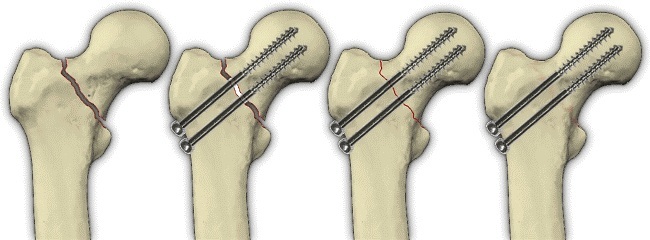
Hip fracture patient can receive a second group of disability if it is not able to serve themselves. While improving the state of the group may change to the third.
conservative therapy
When conservative treatment of the following groups of drugs are used:
- Non-narcotic analgesics to reduce pain;
- diuretics for removal of tissue edema;
- medications that accelerate bone mineralization;
- hondroprotektory for regeneration of bone and cartilage in the complex therapy;
- for the prevention of thromboembolic events (or enoxaparin sodium fondaparinux, Rivaroxaban, and others).
In severe pain in the first day may be conducted procaine blockade, which are an indication for a state of shock and blood pressure fall. Natural bone healing may take up to 12 months.
analgesics
Basic drugs used to relieve pain in hip fracture are shown in the table below.
| Title | Active substance | Dosage, mg / day | Average price, RR. |
| Ketorolac tablets for solution / m and / in | ketorolac | 10-40 | 100 |
| Diclofenac tablets | diclofenac | 25-50, 2-3 times | 50 |
| Ibuprofen tablets | ibuprofen | 200-800 mg, 3-4 times | 100 |
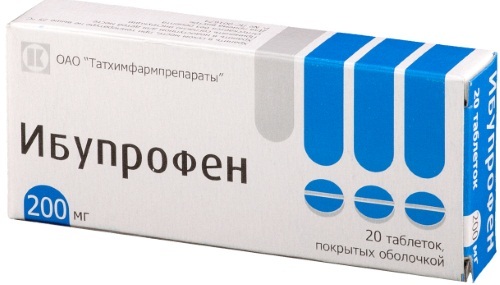
On the first day preparations are administered as injections and later administered tablets for oral administration.
diuretics
Diuretics assigned elderly patients with trauma, described in the table below.
| Title | Active substance | Dosage, mg / day | Average price, RR. |
| Furosemide tablets, solution / m and / in | furosemide | 20-80 | 20 |
| Mannitol, infusion solution | mannitol | 1-1.5 g / kg | 880 (400 ml) |
| Lotonel tablets | torasemide | 10-20 | 500 |
Medications for restoration of bone and cartilage
The best formulations for repairing damaged cartilage and bone in the hip joint are the following: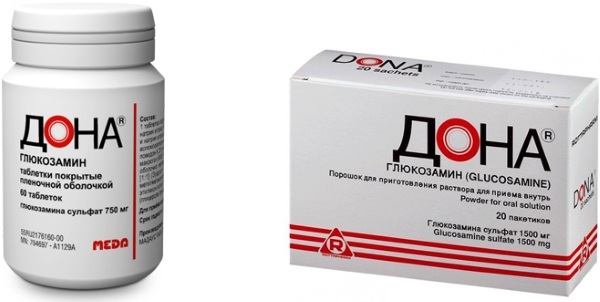
| Title | Active substance | Dosage | Average price, RR. |
| Osteogenon tablets | Ossein hydroxyapatite compound | 1-4 tablets 2 times a day | 600 |
| Osteocare, tablet or oral solution | calcium carbonate, Kolekaltsiferol, magnesium hydroxide | 1 tablet 2 times a day | 400 |
| Don, powder or tablet | glucosamine | 1 tablet 2 times daily or 1 sachet 1 per day. Duration of treatment 4-6 Weeks | 1400 |
| Alflutop, injection | Bioactive concentrates from fish | 1-2 ml once a day, from 5 to 20 injections | 1650 |
Surgery
Femoral neck fracture in the elderly that often occurs on the background of osteoporosis, has successfully spliced during endoportezirovaniya in 98-100% of patients. However, these patients often have other diseases in which the surgery is contraindicated.
These include:
- cardiovascular diseases;
- diabetes;
- dysfunction of the liver and kidneys.
After the prosthetic rehabilitation is much faster than with conservative treatment. Within 2-3 days the patient can begin to move independently.
Preparation for surgery
Before the operation, carried out a standard set of studies:
- general analysis of blood and urine;
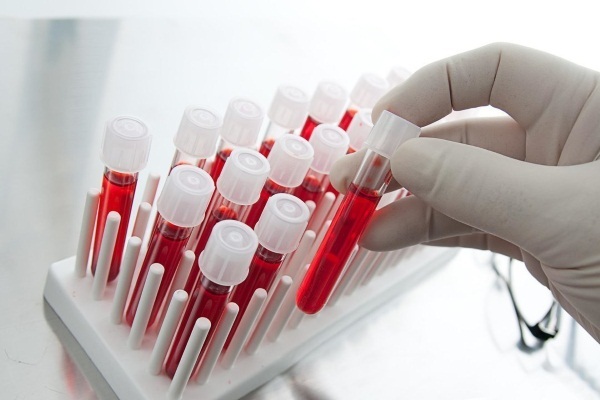
- analysis of feces for the presence of helminth eggs;
- biochemical blood tests to determine the level of glucose, coagulation parameters and other criteria;
- blood type and Rh factor.
Surgical intervention should be carried out in the first hours after the injury. Longer to 2 days and further reduces the likelihood of a favorable outcome.
Postoperatively, the patients underwent additional tests:
- a blood test for HIV and other infections;
- chest X-ray, the spine, head and other extremities (or computed tomography);
- Ultrasonography of the abdomen.
What is the surgery?
Surgery for joint replacement is performed as follows:
- Anesthesia as a general or spinal anesthesia (anesthetic agent is administered by means of an injection into the spinal canal). The patient on the operating table lying on its side.
- Treatment of the surgical field antiseptic.
- Excision of skin, subcutaneous tissue, and fascia (the cut size of the order of 10-15 cm) while coagulating bleeding vessels.
- joint dissection, exposure of the femoral head, removing it in the wound.
- neck resection and replacement of the head, the development of the channel of the femur and acetabulum.
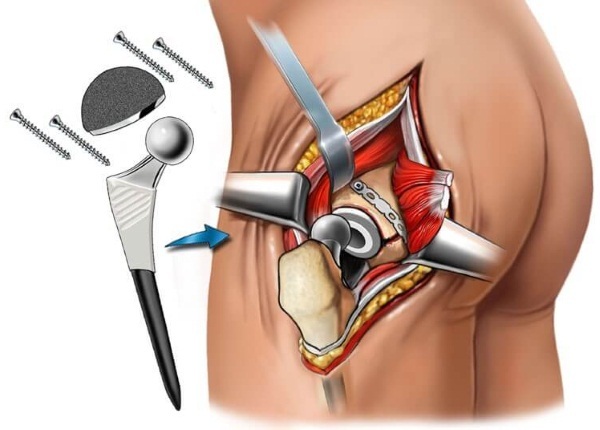
- Installation of the prosthesis and its consolidation.
- Comparison of the joint surfaces.
- Suturing surgical wounds, drainage installation, bandaging.
The total operative time is about 1 hour.
Rehabilitation in the elderly
Depending on the severity of the patient after surgery prescribed strict bed, bed or polupostelny modes. In general, a special diet is not needed, the power produced in accordance with the recommendations for the table №15 of Pevsner. In the presence of other somatic diseases related restrictions are imposed.
Starting active movements depends on the nature of the fracture and the flow of regenerative processes. In all cases it is necessary to strive for the earliest introduction of the exercises. This helps reduce the likelihood of pressure sores and other complications.
early period
Postoperatively, the patient is prescribed antibacterials (ciprofloxacin, ceftriaxone, cefazolin and others) to prevent infection and suppuration of the surgical wound.
From the first hours after surgery, it is recommended to do breathing exercises in the following ways:
- inflating rubber balloons with varying degrees of stiffness;
- forced exhalation of air through the tubes of various cross sections;
- breaths with bag weighing approximately 2 kg (oral placed sand) that is placed on the abdomen;
- the use of special breathing simulators for training of muscles (available in stores medical equipment).
It is also possible to independently carry out the exercises without the above-mentioned objects, lying in bed:
- inhale simultaneously through the nose and the lips, rolled up into a tube, exhale to stretch the sound "and";
- combination inhalation and exhalation with the rotations of the head in a different direction;
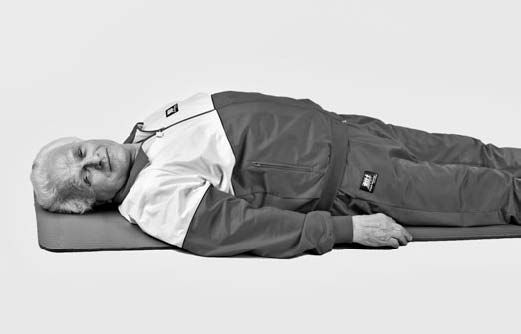
- inhalation through the nose so that the chest is filled with the maximum air out through the mouth;
- a combination of inhalation and exhalation with raising both hands clenched into fists.
All exercises should be done slowly to 5 visits. Gradually increase the duration of the exercises is necessary.
Subsequently, the need to combine breathing exercises with movements of the healthy leg, work through her fingers, gluteal strain muscles, to simulate walking (one foot), bent at the knee, catch up on the frame of the Balkans, which is used for traction fractures.
Late and remote periods
Femoral neck fracture in the elderly which often leads to disability undergoes periodic radiological control - after 6, 12 and 36 weeks after surgery.
The patient gradually begin to perform verticalization - first put on the bed, and then transferred to the walker. It is necessary to help the older man, while maintaining the body behind. It should be done carefully, because it may cause dizziness and a sharp pain.
Exercises performed on the walker, are as follows:
- transfer weight from one foot to the other (they must be placed on the shoulder width);
- alternate load distribution on the arms and legs;
- execution of steps in place;
- attachable walking step.
While improving the health and recovery of motor activity of the patient is transferred to the crutches, to move to the first of which is necessary so that there is no load on the injured leg.
The following types of treatment (5-10 sessions) designate of physiotherapy:
- massage of the back, lumbar and healthy legs;
- magnetic therapy;
- cryotherapy (cold therapy);
- laser therapy.
Care at home
The basic principles of caring for an elderly man who suffered a hip fracture, are as follows:
- the use of anti-decubitus mattresses and pillows, chairs, toilets, walkers and other devices for rehabilitation;
- for patients who show bed rest - with the application of the rising beds and the backrest frame Balkan;
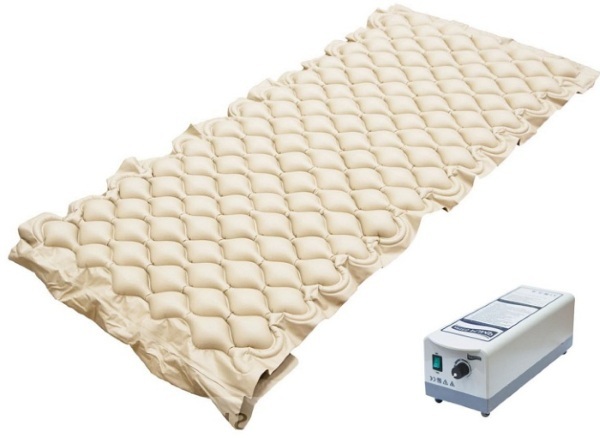
- drinking regime (near the patient's bed should always be drinking at arm's length); This helps prevent constipation and other complications of an inactive state;
- regular replacement bedding, diapers and undergarments (otherwise may occur infection of soft tissues due to the constant contact with urine and feces);
- dieting with an increased amount of vegetables and fruits (unless contraindicated) to increase intestinal motility;
- mikroklizm use in the absence of a chair for 2 or more days;
- maximizing motor activity of the patient in accordance with the recommendations set forth above.
Psychotherapy
As the medical research, more than 80% of elderly patients after hip fracture occur a variety of mental disorders:
- confusional state (the impossibility of quick, clear thinking and speech), cognitive decline;
- depression;
- delirium;
- impaired memory, disorientation in time;
- increased anxiety;
- worsening of sleep, sleep and wakefulness inversion.
They not only contribute to the formation of severe trauma and stress, but also the accompanying somatic diseases, and organic brain damage, common in people older than 75 years.
Patients may appear delusions and hallucinations, distorted perception of reality. Such patients prescribed antidepressants (Pirlindol, Azafen, Cipramil, etc.), tranquilizers to eliminate anxiety and recovery sleep (Phenazepam, Fenzitat, reladorm).
Complications and prognosis
As complications following negative effects may occur in patients:
- Wound infection.
- Nonunion bone.
- Rejection of the prosthesis after the operation.
- Nevpravlyaemy traumatic dislocation, impossibility of independent movement.
- Deterioration associated with a sedentary state:
- pneumonia (congestive form);
- blood clots in blood vessels;
- bed sores;
- hip dysplasia (a violation of his right formation, which can lead to subluxation).
Mortality among elderly patients is 40% at a conservative treatments. However, if the earlier a diagnosis is almost equated to a sentence, it is now modern methods of prosthesis can prolong life after the trauma.
hip fracture - a dangerous condition in old age, which is often fatal and is one of the most common causes of disability in old age. Upon successful arthroplasty and absence of severe concomitant disease prognosis favorable patients. the risk of complications increases without a surgery.
Registration of the article: Vladimir the Great
Video of hip fracture
Malyshev tell about hip fracture:



